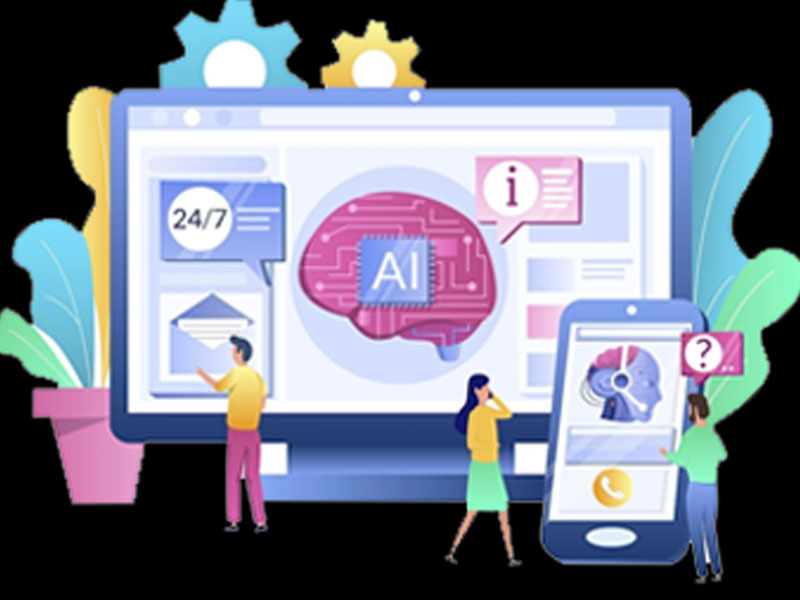AI language models could help diagnose schizophrenia
SOURCE: HTTPS://WWW.SCIENCEDAILY.COM/
OCT 09, 2023
What is artificial intelligence as a service (AIaaS)?
SOURCE: ITBUSINESSEDGE.COM
OCT 17, 2021

Software as a Service, or SaaS, is a concept that is familiar to many. Long-time Photoshop users will recall when Adobe stopped selling its product and instead shifted to a subscriber model. Netflix and Disney+ are essentially Movies as a Service, particularly at a time when ownership of physical media is losing ground to media streaming. Artificial Intelligence as a Service (AIaaS) has been growing in market adoption in recent years, but the uninitiated might be asking: what exactly is it?
In a nutshell, AIaaS is what happens when a company develops and licenses use of an AI to another company, most often to solve a very specific problem. For example, Bill owns a company that sells hotdogs through his e-commerce site. While Bill offers a free returns policy for dissatisfied customers, he lacks the time to provide decent customer support, and rarely replies to emails. Separately, a software developer has created a chatbot that can handle most customer inquiries using natural language processing, and often solve the issue or answer a question before human intervention is even required. For a monthly fee, the chatbot is licensed to the hotdog vendor, and implemented on his website. Now, the bot is solving 80% of customer issues, leaving Bill with the time to respond to the remaining 20%. But Bill is still too preoccupied making hotdogs, so he subscribes to a service like Flowrite, that uses AI to intelligently write his emails on the fly.
AI is also being put in service to analyze large sets of data and make predictions, streamline information storage, or even detect fraudulent activity. Amazon’s personal recommendation engine, an AI powered by machine learning, is now available as a licensed service to other retailers, video stream platforms, and even the finance industry. Google’s suite of AI services range from natural language processing, handwriting recognition, to real-time captioning and translation. IBM’s groundbreaking AI, Watson, is now being deployed to fight financial crimes, target advertisements based on real-time weather analysis, and analyze data to help hospitals make treatment judgements.
Machine learning AIs improve with time, usage, and development. Some, like YouTube’s recommendation engine, have become so sophisticated that it sometimes feels like we have entire television stations tailored perfectly to our interests. Others, like language model AI GPT-3, produce entire volumes of text that are nearly indistinguishable from an authentic human source.
Microsoft has even put GPT-3 to use to translate conversational language into a working computer code, potentially opening up a new frontier in how software can be written in the future, and giving coding novices a fighting chance. Microsoft has also partnered with NVIDIA to create a new natural language generation model, three times as powerful as GPT-3. Improvements in language recognition and generation have obvious carryover benefits for the future development of chatbots, home assistants, and document generation as well.
Industrial giant Siemens has announced they are integrating Google’s AIaaS solutions to streamline and analyze data, and predict, for instance, the rate of wear-and-tear of machinery on their factory floor. This could reduce maintenance costs, improve the scheduling of routine inspections, and prevent unexpected equipment failures.
AIaaS is a rapidly growing field, and there will be many more niches discovered that it can fill for years to come.
LATEST NEWS
Augmented Reality
Hi-tech smart glasses connecting rural and remote aged care residents to clinicians
NOV 20, 2023
WHAT'S TRENDING


Data Science
5 Imaginative Data Science Projects That Can Make Your Portfolio Stand Out
OCT 05, 2022

SOURCE: HTTPS://WWW.SCIENCEDAILY.COM/
OCT 09, 2023
SOURCE: HTTPS://WWW.THEROBOTREPORT.COM/
SEP 30, 2023
SOURCE: HTTPS://WWW.SCIENCEDAILY.COM/
AUG 08, 2023
SOURCE: HOUSTON.INNOVATIONMAP.COM
OCT 03, 2022
SOURCE: MEDCITYNEWS.COM
OCT 06, 2022